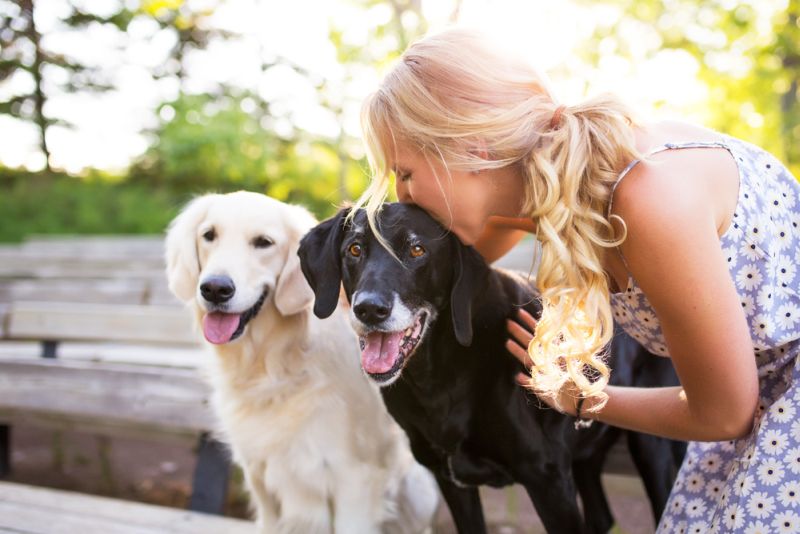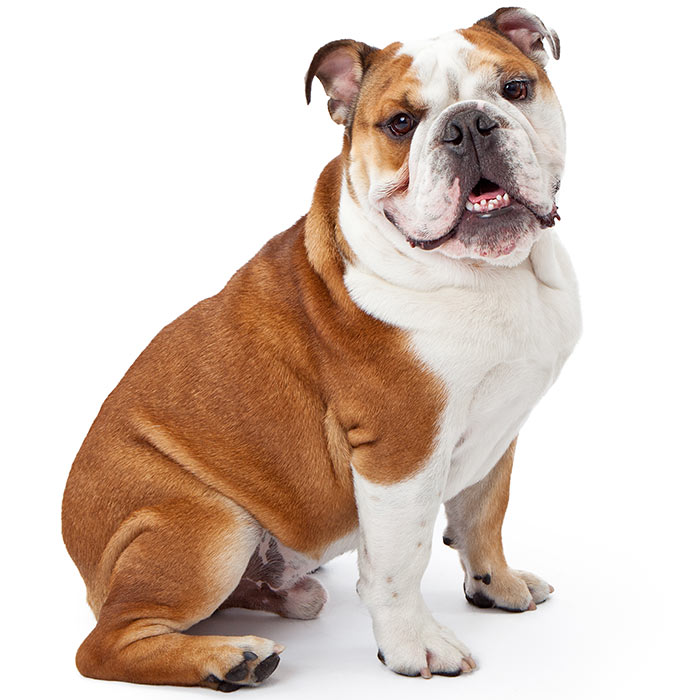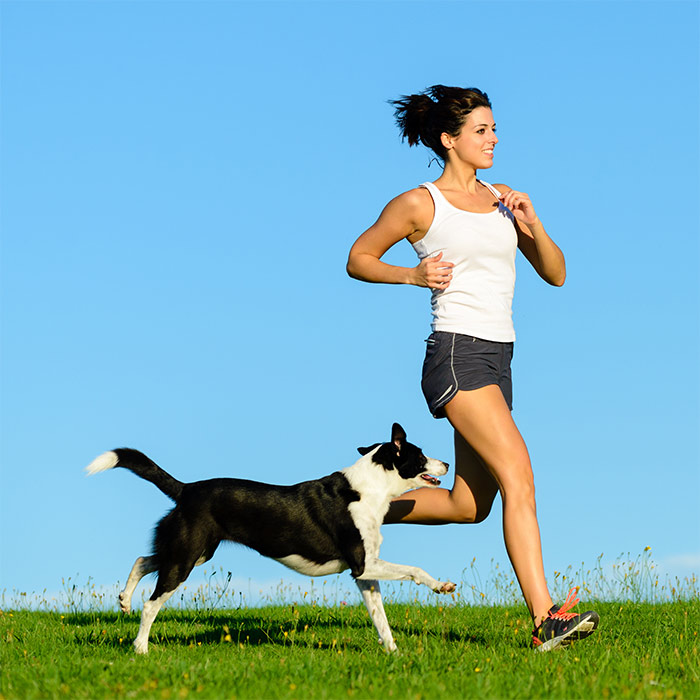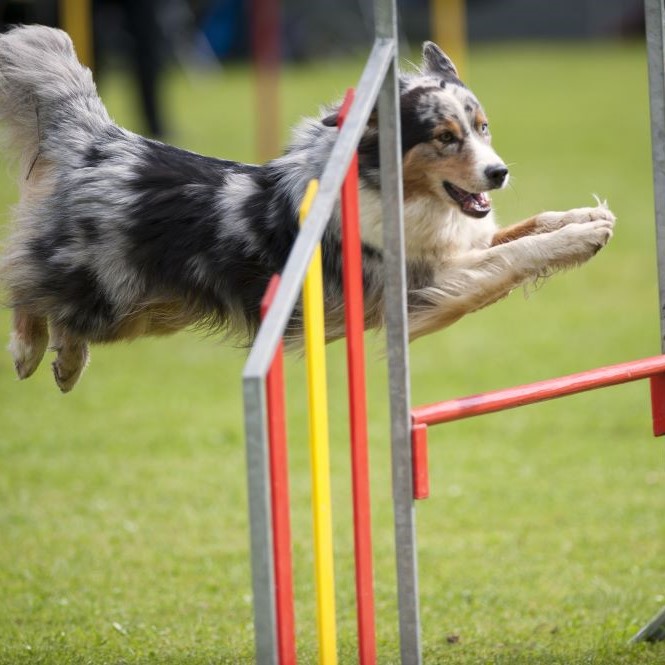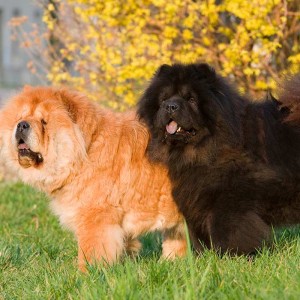Hunting dog breeds – Best dogs for hunting
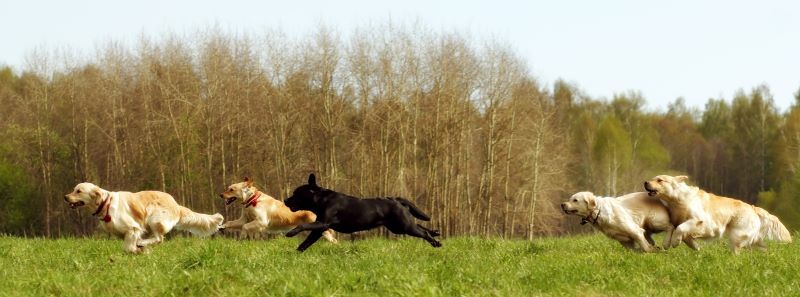
If you are a dog owner who enjoys hunting, having your dog accompany you on your adventures can be very rewarding for both of you. But is your dog up to the task? Certain dog breeds were developed with the physique, behaviour and temperament that is ideal for hunting.
Naturally, hunting dog breeds that were bred to have these characteristics tend to excel when put to the test. In addition to having strength and stamina, to make good hunting companions, dogs need to be obedient, intelligent, resourceful and have excellent recall skills.
 Hunting dog breeds are some of the most active dogs around. If you’re only an occasional hunter, you still need to provide your hunting companion with enough daily exercise to keep them happy and healthy. Many of the top hunting breeds enjoy, and excel at, a wide variety of competitive dog sports. As well as providing physical and mental exercise, dog sports also build incredible bonds between dogs and their owners.
Hunting dog breeds are some of the most active dogs around. If you’re only an occasional hunter, you still need to provide your hunting companion with enough daily exercise to keep them happy and healthy. Many of the top hunting breeds enjoy, and excel at, a wide variety of competitive dog sports. As well as providing physical and mental exercise, dog sports also build incredible bonds between dogs and their owners.
If you’ve ever wondered which are the best dogs for hunting, read on for our comprehensive list or skip ahead to your breed of interest.
- American Foxhound
- Basset Hound
- Beagle
- Bull Arab
- Clumber Spaniel
- Cocker Spaniel
- English Pointer
- Field Spaniel
- German Shorthaired Pointer
- Golden Retriever
- Hungarian Vizsla
- Irish Setter
- Jack Russell Terrier
- Labrador Retriever
- Louisiana Catahoula Leopard Dog
- Norwegian Elkhound
- Rhodesian Ridgeback
- Springer Spaniel
- Weimaraner
- Vizsla
American Foxhound
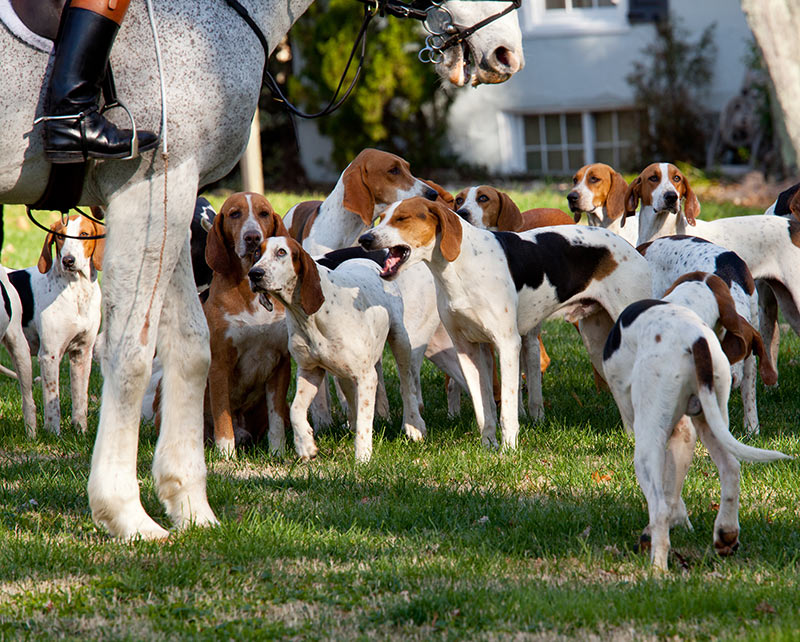
The American Foxhound, as its name suggests, is a hunting dog that was bred in the USA to hunt foxes and other game. They have tremendous hunting instincts, along with a keen sense of smell and the energy and endurance to run effortlessly for many hours on the chase. As a scenting pack hound, they work with a pack of likeminded foxhounds who track quarry along with hunters, who usually follow on horseback.
With a very high need for daily exercise and training, American Foxhounds are best suited to active sports lovers and game hunters, particularly those living in a rural environment. They are definitely not suited to apartment life and urban environments, nor are they suited to just being family dogs.
As hunters, American Foxhounds have a strong prey drive and independent and stubborn nature, meaning that they need an experienced owner and on-going obedience training.
| Weight: | 27 to 32 kg |
| Height: | 58 to 64 cm |
| Coat: | Short with hard texture to protect from underbrush |
| Temperament: | Friendly, stubborn, independent |
| Hunting style: | Tracking in a pack, followed by hunters on horseback |
| Quarry: | Foxes |
- Learn more about the American Foxhound.
- Take our breed selector quiz to find out if the American Foxhound is the best breed of hunting dogs for you.
Basset Hound
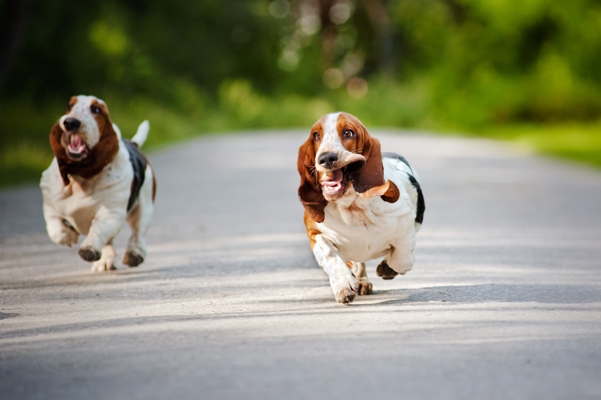
The distinctive Basset Hound has a very long body, short, muscular legs, loose skin, mournful eyes and long, drooping, velvety ears. With heavy bones, it possesses big-dog strength and stamina and is built for endurance rather than speed.
Originating in France in the 16th century, they became a popular hunting breed for those who could not afford to hunt on horseback, as they could easily be followed on foot. A scent hound and close relative of the Bloodhound, the Basset Hound has uncanny ability to track game – ranked second to the Bloodhound in accuracy – and can become easily distracted by interesting scents and ignore everything else.
Developed to hunt small game, they can often be a handful on walks, tending to chase other small dogs or wild animals, and sometimes even cars. They are prone to gaining a lot of weight, and regular moderate daily exercise is a must for their health and well-being. As pack hunters, they have a great reputation for getting on well with other animals around the house, even cats.
| Weight: | 18 to 27 kg |
| Height: | 30 to 38 cm |
| Coat: | Short, smooth |
| Temperament: | Independent, placid, loyal |
| Hunting style: | Tracking in a pack, followed by a hunter on foot |
| Quarry: | Rabbits, deer |
- Learn more about the Basset Hound.
- Take our breed selector quiz to find out if Basset Hounds are the best dogs for hunting for you.
Beagle
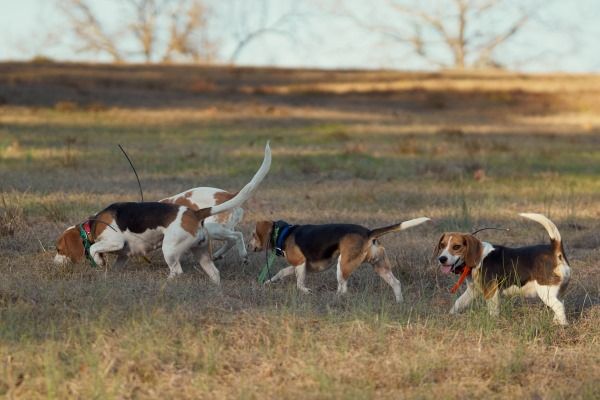
Bred in England for the primary purpose of tracking game, Beagles have a great nose for sniffing out rabbits, hares and deer. It was known as a ‘foothound’ because a hunter with a pack of Beagles could pursue game on foot, without the need for a horse at all, making it a great hunting companion for less afluent hunters.
As hunting dogs, Beagles are an active and energetic breed who need to be walked at least once or twice a day, with some longer walks or runs thrown into the mix. Their superior sense of smell can lead to all sorts of distractions while walking down the street or at the park, so keeping them on-leash, along with careful supervision, is a must.
Beagles enjoy having a job to do, like playing with the kids or ‘protecting’ them. As they were bred to hunt in packs, they enjoy company and are generally easy-going. However, their distractibility and single-mindedness can make difficult to train.
| Weight: | 8 to 14 kg |
| Height: | 33 to 41 cm |
| Coat: | Short with hard texture to protect from underbrush |
| Temperament: | Gentle, reliable, loyal |
| Hunting style: | Tracking in a pack, with hunters on foot |
| Quarry: | Rabbits, hare |
- Learn more about the Beagle.
- Take our breed selector quiz to find out if the Beagles are the best dogs for hunting for you.
Bull Arab
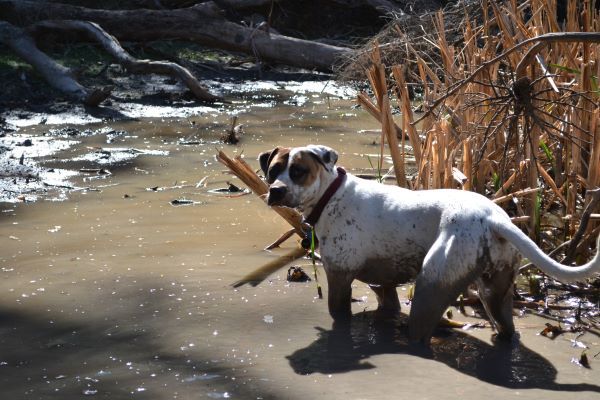
Also known as the Australian Pig Dog, Bull Arabs are tough, active, large size dogs that are exceptional hunters of wild pigs and other feral animals. Widely considered to be one of the best Australian hunting breeds, their excellent tracking abilities have also been utilised for Search and Rescue missions.
The Bull Arab is characterised by its size, strength, stamina, athleticism and agility. Their bodies are tall, sturdy and muscular, and they have strong hind legs designed for long bursts of fast running, as well as digging in when they get a hold of their prey.
Despite their drive to hunt, they are remarkably even-tempered and calm – when they are not on the trail of wild boars or wandering sheep – and they can be trained to remain relatively restrained around other animals. However, when around strangers and other animals, a Bull Arab should always be strictly supervised, and it is recommended to always leash or properly secure the breed when outdoors.
| Weight: | 32 to 42 kg |
| Height: | 61 to 69 cm |
| Coat: | Short |
| Temperament: | Active, independent, even-tempered |
| Hunting style: | Tracking wild pigs |
| Quarry: | Wild pigs, other feral animals |
- Learn more about the Bull Arab.
- Take our breed selector quiz to find the best dogs for hunting that match your requirements.
Clumber Spaniel
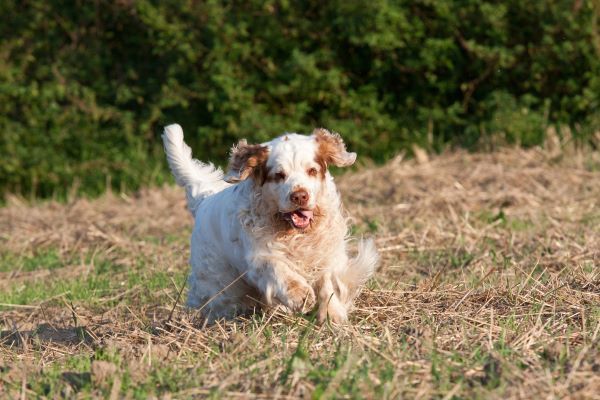
Bred as a burly gamebird hunter for the English nobility, the Clumber is the largest and stockiest of the spaniel breeds. Some think they look like a rugged version of the Cocker Spaniel (see below), but the two breeds are very different.
Despite their weight and lumbering appearance, Clumbers are very active, and their movement is free and easy. Their large bones, heavy brow, deep chest, straight forelegs, powerful hindquarters and good feet all give them the power and endurance required for pushing through thick cover in the field. They love fetching and swimming and are as happy as a Labrador in water.
Clumbers are calm, accepting, sweet and easy-going in the home environment, but put them outdoors on a scent and they can be relentless. For this reason, they are well-known for their independent spirit, often to the point of being wilful and stubborn.
| Weight: | Up to 38 kg |
| Height: | Up to 50 cm |
| Coat: | Dense, straight & flat |
| Temperament: | Laid-back, amusing, dignified |
| Hunting style: | Flushing & retrieving gamebirds |
| Quarry: | Gamebirds |
- Learn more about the Clumber Spaniel.
- Take our breed selector quiz to find the best dogs for hunting that match your requirements.
Cocker Spaniel
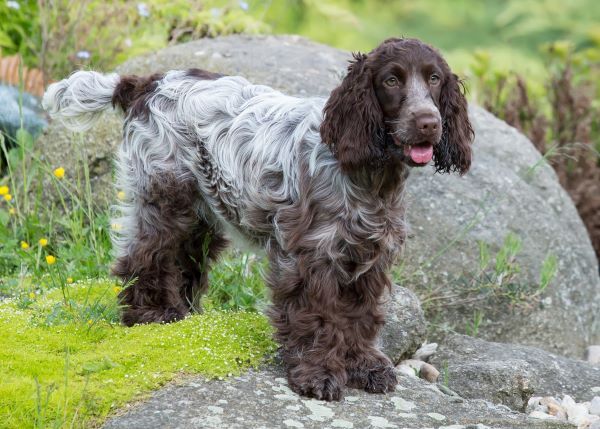
A strong, sturdy and active dog who can work happily and tirelessly all day as a bird hunter’s helper, the Cocker Spaniel was a very popular hunting dog during the 18th and 19th centuries. The smallest of the sporting dogs, they could penetrate through the undergrowth to flush out woodcock.
As hunting dogs, Cocker Spaniels need lots of exercise and mental stimulation; adult Cockers will thrive on a good off-lead run of up to an hour a day. They love to swim and any exercise involving water, birds, and exploring exciting off-lead areas will keep the average cocker very content and happy.
Cockers have an excellent sense of smell – they could smell something far, far away that they want to run to and investigate – and they are often used for drug detection services. Being wonderful all-round companions, today the Cocker Spaniel remains one of the most popular breeds world-wide.
| Weight: | 13 to 15 kg |
| Height: | 36 to 41 cm |
| Coat: | Long, smooth, silky |
| Temperament: | Loyal, affectionate, gentle |
| Hunting style: | Flushing & driving out gamebirds |
| Quarry: | Woodcock & other gamebirds |
- Learn more about the Cocker Spaniel.
- Take our breed selector quiz to find out if Cocker Spaniels are the best dogs for hunting that match your requirements.
English Pointer
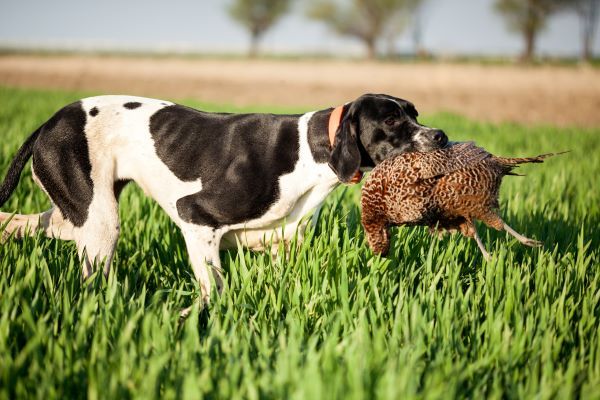
Hunting dogs first and foremost, English Pointers were bred in England as far back as the 17th century. While their exact bloodline is a mystery, Pointers have a hound or two in the mix, accounting for their excellent sense of smell.
The Pointer’s name is its job description – it “points”, meaning it finds and indicates prey by freezing, aiming its nose in the direction of the quarry and holding up one of its front paws. Designed to hunt all day long, and dominant in field trials, this breed may well qualify as the hardest hunting bird dog out there.
Capable of great speed and agility, Pointers also make an excellent runner’s companion, while for non-runners, long daily walks and vigorous play sessions are essential. A large, securely fenced yard in which the dog can run up and down at high speed is another requirement for the breed.
| Weight: | 20 to 34 kg |
| Height: | Up to 71 cm |
| Coat: | Short, dense, care-free |
| Temperament: | Hardworking, calm, loyal |
| Hunting style: | Pointing game |
| Quarry: | Gamebirds, hare |
- Take our breed selector quiz to find the best dogs for hunting that match your requirements.
Field Spaniel
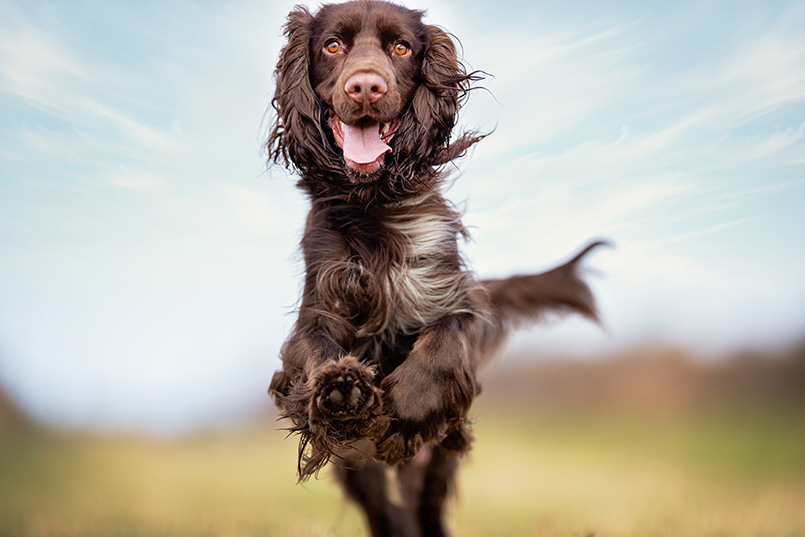
The Field Spaniel is a medium-sized hunting companion, bred for activity and endurance in heavy cover and water, who will work enthusiastically in the field. Solidly built, with moderate bone and firm, smooth muscles, they are sturdy and athletic dogs who make capable hunting companions.
The name Field Spaniel was designated to describe the Spaniel type born of Cocker, English Springer and Sussex crosses. The breed is known for its calm, sweet and sensitive nature and is not as excitable as its close relative, the Cocker Spaniel.
With their deeply rooted hunting drive and tracking ability, they are energetic and enthusiastic whether exercising or working in the field. Very playful, they enjoy a good backyard romp and will happily spend hours retrieving the ball for the kids – their favorite game is when someone throws the ball into the bushes, and they need to search for it.
| Weight: | 16 to 25 kg |
| Height: | Up to 46 cm |
| Coat: | Long, smooth, silky |
| Temperament: | Sweet, sensitive, fun-loving |
| Hunting style: | Fieldwork, retrieving game from land or water |
| Quarry: | Woodcock & other gamebirds |
- Learn more about the Field Spaniel.
- Take our breed selector quiz to find out if Field Spaniels are the best dogs for hunting that match your requirements.
German Shorthaired Pointer
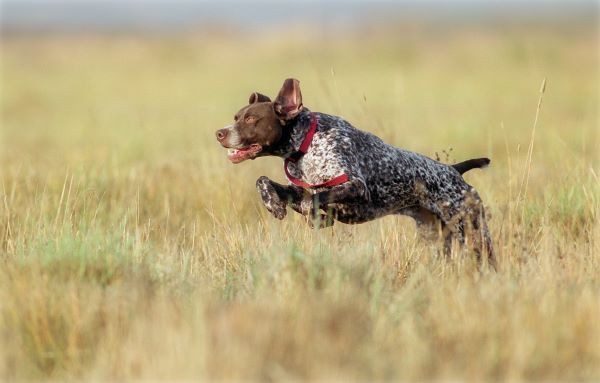
As an all-round hunting dog, German Shorthair Pointers have plenty of agility, speed and stamina and enjoy long hours of strenuous activity. Affectionate, eager to please, they are keen to work with their owners and often feature among the top-winning breeds in competitive hunting events. According to the GSP Club of America, they are known as the “canine triathlete” because of their skill at hunting, pointing and retrieving.
Needing intense daily exercise, German Shorthair Pointers are suited to active, energetic and outdoorsy families – they are excellent hiking and running companions who love exploring new places and spending time outdoors. They enjoy playing with people and other dogs, but are happiest with their owner by their side.
As hunters, they have a strong prey drive that might cause them to bolt during off-leash exercise, or scale fences or walls in pursuit of their quarry. Equipped with webbed feet, they are skilful swimmers who can retrieve in water, but with their wiry frame and short coat, they are better suited to warmer climates.
| Weight: | 25 to 32 kg |
| Height: | Up to 60 cm |
| Coat: | Short, thick, water-repellent |
| Temperament: | Friendly, inquisitive, affectionate |
| Hunting style: | Pointing and retrieving (on land or water) |
| Quarry: | Upland gamebirds, waterfowl |
- Learn more about the German Shorthair Pointer.
- Take our breed selector quiz to find out if the German Shorthair Pointer is one of the best hunting dogs for you.
Golden Retriever
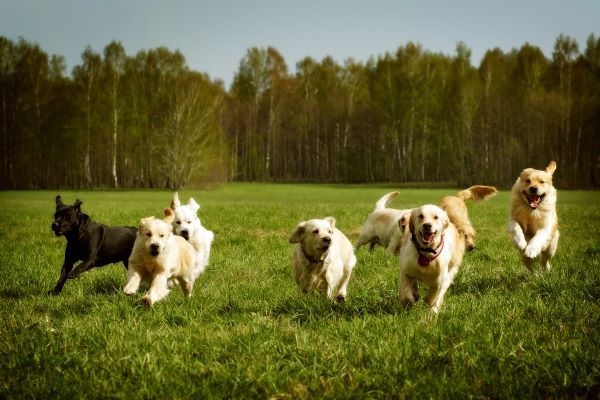
The hardy, adaptable and energetic Golden Retriever makes an ideal companion for active owners, whether hunters, hikers, or runners. They excel at a variety of canine sports including agility, obedience and tracking, and with their exceptional intelligence and keen sense of smell they are often used as search and rescue dogs. 
Moving with a smooth, powerful gait, when it comes to hunting and field work, Goldens are serious, steady and willing workers with an intense desire to please. Developed to retrieve waterfowl for hours on end, swimming and fetching are natural pastimes for this breed.
Goldens are very friendly and social dogs who love nothing more than spending time with their families. They bond closely with their humans and maintain a youthful sense of playfulness throughout their lives.
| Weight: | 30 to 34 kg |
| Height: | Up to 61 cm |
| Coat: | Medium length with a dense, water-repellent top coat |
| Temperament: | Friendly, affectionate, gentle |
| Hunting style: | Retrieving on land and water |
| Quarry: | Gamebirds, waterfowl |
- Learn more about the Golden Retriever.
- Take our breed selector quiz to find out if Golden Retrievers are the best hunting dogs for you.
Harrier
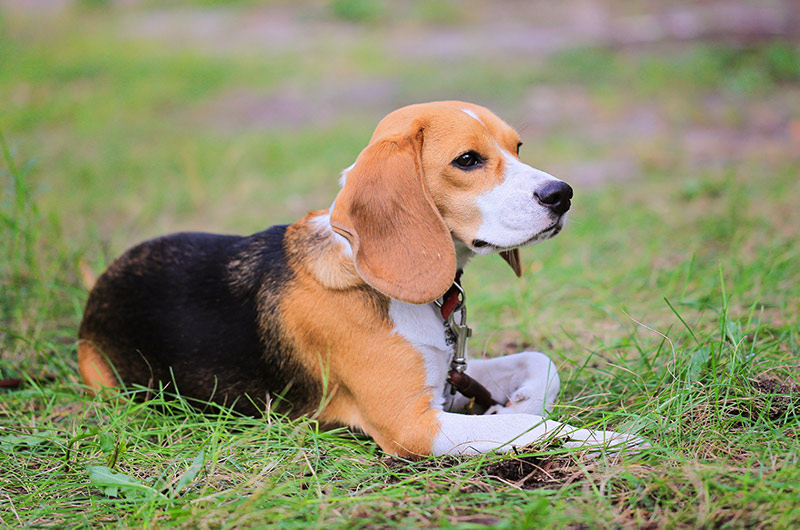
Developed in England to spend long hours in the field chasing after prey in all terrains, Harriers have all the essential attributes of a scenting pack hound. They are strong and sturdy dogs with large bones for their size and similar in appearance to the larger, faster English Foxhound and smaller, slower Beagle.
Harriers are highly energetic and need ample exercise every day, in the form of a long daily walk or jog of an hour or more, or strenuous outdoor play. They make excellent companions for walkers, hikers, runners, bike- and horse- riders and other active and outdoorsy owners. Walks, runs or rides must be taken on a leash – otherwise, when they find a good scent, they’ll take off at a pace that you won’t be able to match.
The breed excels at competitive canine sports such as agility, tracking, rally, coursing ability tests, and other activities that can be enjoyed together by dog and owner. Harriers love to play so fit in well with families with kids; fetch, catch, and tag are all favourite games.
| Weight: | 18 to 29 kg |
| Height: | 48 to 54 cm |
| Coat: | Short & glossy |
| Temperament: | Outgoing, friendly, independent, stubborn |
| Hunting style: | Tracking in a pack, followed by hunters on foot |
| Quarry: | Hare, fox |
- Learn more about the Harrier.
- Take our breed selector quiz to find out which is the best breed of hunting dogs for you.
Hungarian Vizsla
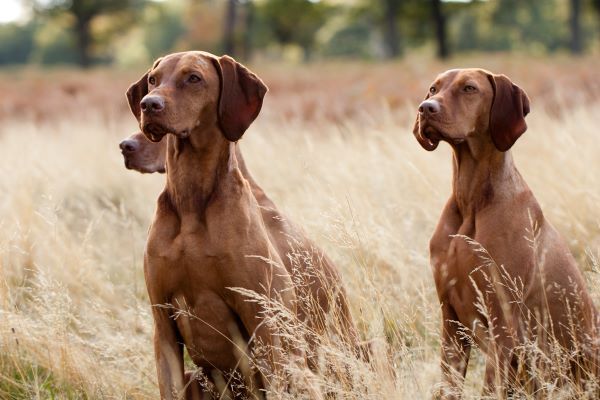
Known for their excellent sense of smell and versatile hunting abilities, Vizslas – also called the Hungarian Pointer – are swift, all-purpose hunting dogs who can do just about anything asked. Very muscular and energetic, this breed is built for long days in the field.
Vizlas thrive on extreme amounts of exercise and are always ready to go. They love having a task to do and need continuous training and enrichment. If they do not receive adequate physical and mental stimulation they can become destructive or develop behavioural problems.
As a hunter expected to work closely with humans, Vizslas form a tight bond with their owners and hate to be left alone, making them the perfect companion for strenuous outdoor adventures like hunting, hiking and trail running. They also need a large, safe enclosed area at home in which to run and play.
| Weight: | 18 to 30 kg |
| Height: | Up to 64 cm |
| Coat: | Short, smooth |
| Temperament: | Friendly, loyal, affectionate |
| Hunting style: | All purpose, pointing and retrieving |
| Quarry: | Upland game, rabbits, waterfowl retrieving |
- Learn more about the Hungarian Vizsla.
- Take our breed selector quiz to find out if the Hungarian Vizsla is the breed of hunting dogs that is best for you.
Irish Setter
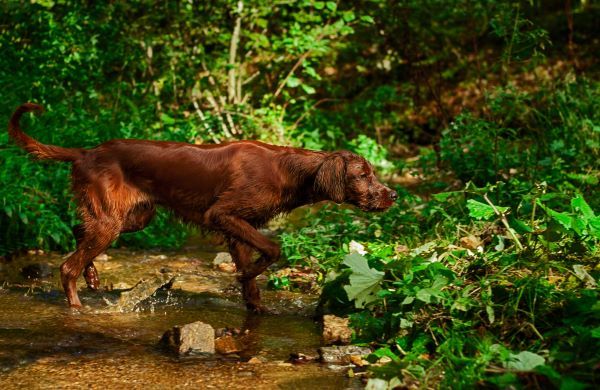
The Irish Setter, also known as the Red Setter because of its brilliant red coat, is a large sporting dog that was developed by combining English Setters, Spaniels, Pointers, and Gordon Setters. Among the swiftest of the sporting dogs, their behavior is dominated by their endless energy, which is best utilised with hunting and retrieving.
Irish Setters use their nose a lot, and you will usually find them nose down and tail up, sniffing out the area around them in readiness for a potential hunt. Their desire to hunt is immense and early recall training is of utmost importance to keep them safe in urban environments.
With their high levels of energy and a need to explore new environments, Irish Setters require a significant level of exercise. Taking them on one or several walks a day is high recommended, because they do not enjoy being confined. Mud puddles and bad weather are this breed’s best friend, so it’s best to always have a towel ready at the door!
| Weight: | 25 to 34 kg |
| Height: | Up to 70 cm |
| Coat: | Long and feathery |
| Temperament: | Playful, good-natured, excitable |
| Hunting style: | Tracking and setting down |
| Quarry: | Gamebirds |
- Learn more about the Irish Setter.
- Take our breed selector quiz to find out if Irish Setters are the best hunting dogs for you.
Jack Russell Terrier
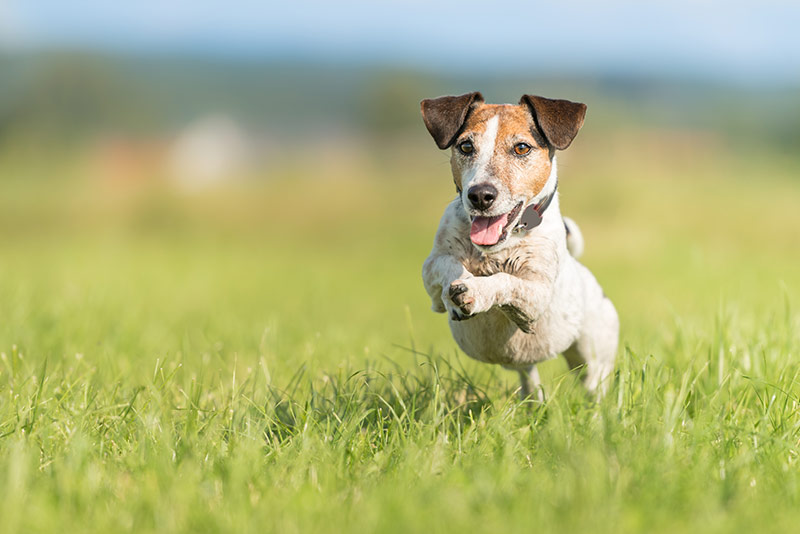
The Jack Russell Terrier is a small but mighty breed with loads of energy. Originally bred to hunt small vermin and foxes, JRT’s relish putting their keen sense of smell to good use on the trail. Their strong legs allow them to keep up with the hunting hounds and their lean, muscular bodies are perfect for delving deep into fox dens.
Driven and active, Jack Russell Terriers love to run, dig and play, enjoy being entertained and are always up for an adventure. They require plenty of attention, outdoor activity and exercise, so a sporty and energetic owner is ideal, while adventures like hunting and hiking trips are perfect.
Their hunting background is evident in their determined drive to pursue everything and anything – when taken outdoors, they are notorious for chasing birds, other dogs, joggers, cyclists, cars and even buses.
| Weight: | 6 to 8 kg |
| Height: | Up to 38 cm |
| Coat: | Short, smooth or rough |
| Temperament: | Fearless, alert, friendly |
| Hunting style: | Running with hounds, going to ground & bolting |
| Quarry: | Fox, vermin, badgers |
- Learn more about the Jack Russell Terrier.
- Take our breed selector quiz to find out if Jack Russell Terriers are the best hunting dogs for you.
Labrador Retriever
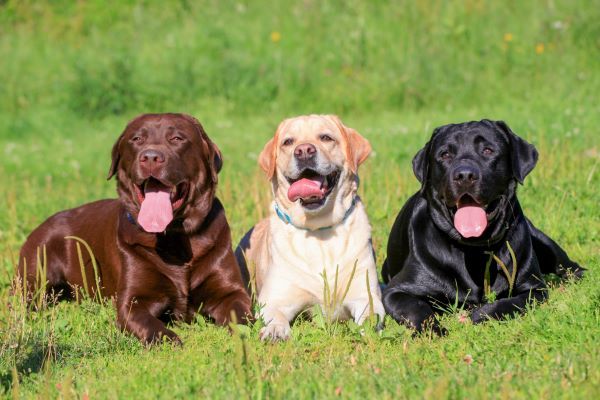
One of the most popular breeds and particularly suited to active owners, the Labrador Retriever is a working breed that traditionally functioned as a fisherman’s helper. Labs are enthusiatic athletes whose favourite activities include retrieving and swimming, and they also enjoy canine sports such as field trials, tracking, agility and dock diving.
Labradors are energetic and high-spirited dogs who need to be taken on a long, brisk walk, jog or other strenuous activity at least once per day. They are always up for new adventures and can adjust easily to a variety of climates and terrain. Being ell-behaved, easy-going and highly intelligent, they won’t stray too far away while off of the leash.
Friendly, outgoing and affectionate, Labs love attention and are happy to relax and cuddle up with their family on rest days.
| Weight: | 25 to 36 kg |
| Height: | Up to 62 cm |
| Coat: | Short, dense, weather-resistant |
| Temperament: | Friendly, loyal, happy |
| Hunting style: | Retrieving on land and water |
| Quarry: | Ducks |
- Learn more about the Labrador Retriever.
- Take our breed selector quiz to find out if the Labrador Retriever is one of the hunting dog breeds that is right for you.
Louisiana Catahoula Leopard Dog
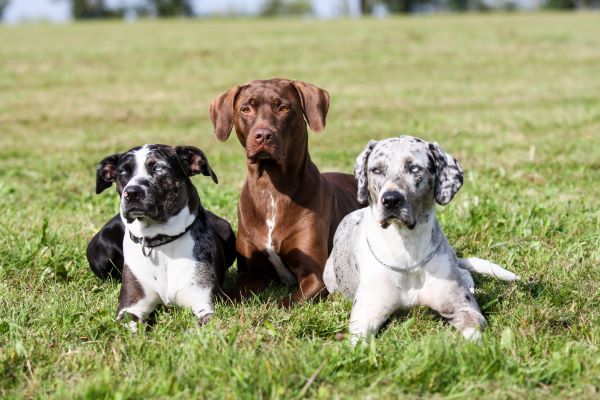
Louisiana Catahoula Leopard dogs are versatile working dogs with an excellent sense of smell. They are recommended for those wanting a working dog, canine sports competitor or companion for demanding outdoor adventures. They are territorial, protective and fearless hunters who will not hesitate to attack a wild boar.
Catahoulas are tough, well-muscled and powerful, possessing both agility and great endurance. Bred to be intense and uncompromising workers, their ideal home is one with a very large fenced yard and opportunities to perform their natural work of tracking and herding.
Exercise needs for this breed are extreme, requiring walks several times a day, long hikes and play time in the backyard, retrieving balls or flying discs. Swimming is another good option – their webbed feet enable them to swim well and to work in soft, marshy areas. Training for dog sports like agility, obedience and rally are also good outlets.
| Weight: | 25 to 40 kg |
| Height: | 51 to 71 cm |
| Coat: | Short to medium |
| Temperament: | Loyal, independent, protective |
| Hunting style: | Working in a pack to pen a wild herd |
| Quarry: | Wild hog & cattle |
- Learn more about the Louisiana Catahoula Leopard Dog.
- Take our breed selector quiz to find out if the Louisiana Catahoula Leopard Dog is one of the best hunting dogs for you.
Norwegian Elkhound
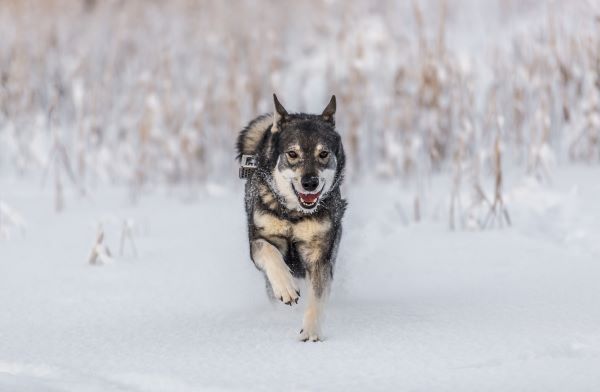
The Norwegian Elkhound is a robust spitz-type dog with a hardy, muscular body that is designed for endurance and agility rather than speed. A specialised hunter of giant elk, or moose, and other large game such as wolves and bears, the breed is classified as a hound because of its exceptional ability to follow the scent of these magnificent and dangerous creatures.
The Elkhound’s job requires tremendous stamina to track and follow elk for many days, in freezing conditions over rough and varied terrain, as well as great courage and dexterity to hold their prey at bay by barking loudly, jumping in and out and dodging attack until the hunters arrive.
Developed to hunt all day under gruelling conditions, the Elkhound is very energetic and needs consistent, strenuous exercise, such as a brisk jog, a very long walk, a swim or an invigorating play session. Favourite activities include running alongside a bike or going for a long run in the woods, preferably in a cold climate. Dog sports like agility, rally, sledding and herding trials are also good outlets. A home with a large, well-fenced yard is a necessity, given their excessive activity requirements.
| Weight: | 20 to 23 kg |
| Height: | 49 to 52 cm |
| Coat: | Medium, thick, smooth |
| Temperament: | Friendly, bold, loyal, independent |
| Hunting style: | Tracking and baying in a pack trailed by hunters |
| Quarry: | Elk, moose, other large game |
- Learn more about the Elkhound.
- Take our breed selector quiz to find out which of the hunting dog breeds is right for you.
Rhodesian Ridgeback
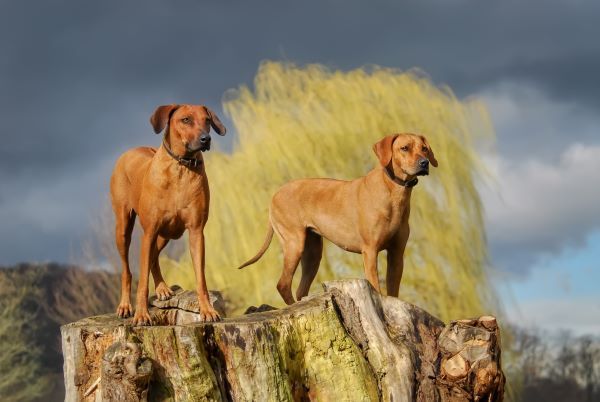
The Rhodesian Ridgeback was developed in the mid 17th century in Southern Africa to hunt large game for many hours over long distances. Also known as the Lion dog, they became famous in their native Africa for their skill at tracking game, especially lion, in groups of two or three, and then, with great agility, keeping the beast at bay until the arrival of the hunter.
Rhodesian Ridgebacks are very independent and dignified dogs who are somewhat aloof and reserved toward strangers, and have a tendency to bond with one person in the household. Because of their large size, strong prey drive and independent nature, they need an experienced owner with a firm but patient approach.
Strong, athletic and robust, Rhodesian Ridgebacks love to run and need good amount of physical activity to help keep them healthy and happy. They can also participate in canine sports such as tracking, agility, and other activities that dog and owner can enjoy together.
| Weight: | 30 to 40 kg |
| Height: | Up to 69 cm |
| Coat: | Short, smooth |
| Temperament: | Protective, loyal, independent |
| Hunting style: | Tracking and baying in small group with hunters on horseback |
| Quarry: | Lion, other large game |
- Learn more about the Rhodesian Ridgeback.
- Take our breed selector quiz to find out if the Rhodesian Ridgeback is one of the best hunting dogs for you.
Springer Spaniel
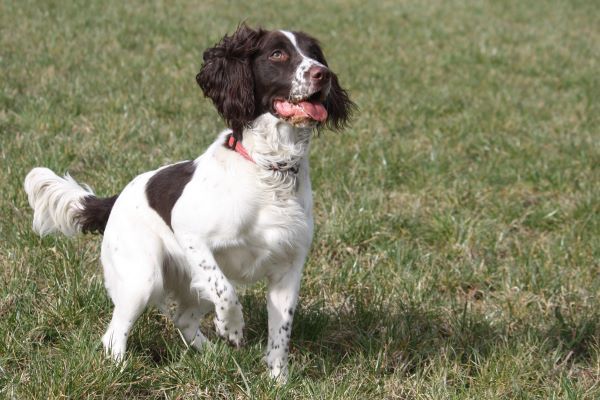
This medium-sized gun dog was originally developed for the flushing-out and retrieval of small and medium-sized game. While the smaller Cocker-type spaniels were used to hunt small gamebirds like woodcock, the larger English and Welsh Springer Spaniels were employed in the hunting of rabbits, foxes and hares.
Springer Spaniels are loyal, excitable and very energetic dogs that are highly affectionate towards their owners and always keen to please. They require a good deal of physical exercise, mental stimulation and human attention, love to play fetch and go for long walks. The breed loves water and will swim whenever given the opportunity.
When on outings to a public park or in a built-up area, Springer Spaniels should be closely supervised. Their strong prey instinct means that, once let off the lead, Spring Spaniels will tend to pursue smaller animals or cars.
| Weight: | 23 to 24 kg |
| Height: | 48 to 56 cm |
| Coat: | Medium |
| Temperament: | Friendly, loyal, enthusiastic |
| Hunting style: | Flushing and retrieving |
| Quarry: | Rabbit, fox, hare |
- Learn more about the Springer Spaniel.
- Take our breed selector quiz to find out which of the hunting dog breeds is right for you.
Weimaraner
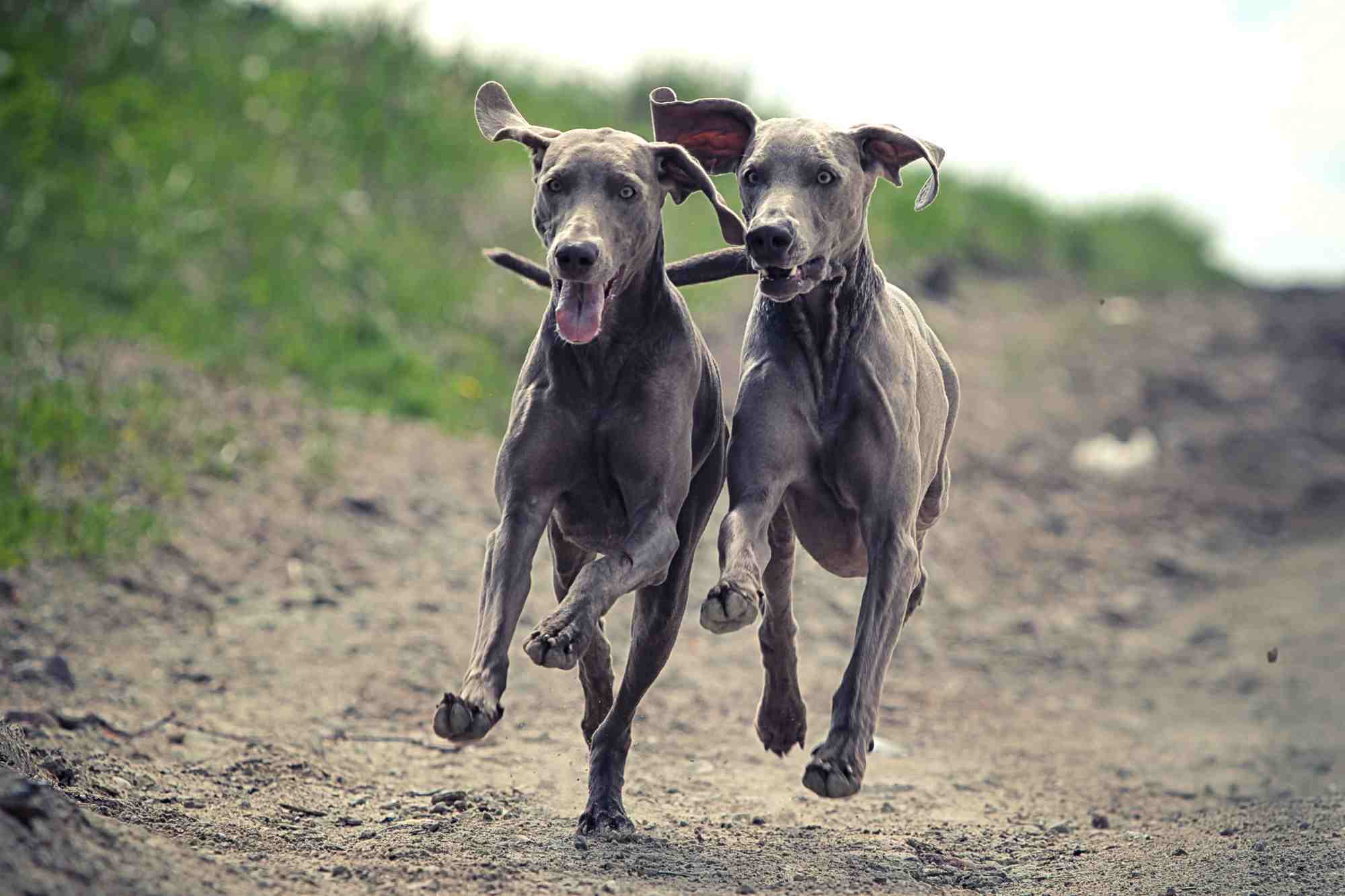
The Weimaraner was developed for hunting large game such as wild boars, deer and bears. Lean and athletic, they were prized for their high level of endurance and speed. When the popularity of large game hunting began to decline, they were instead put to work flushing out rabbits, foxes and other small game.
The breed excels at both short and long distances, picking up the pace when required for a sprint. Liking to stay close to their owner, they make excellent running and hiking partners. They require a good deal of human attention and want to be apart from their owner.
Weimaraners require a lot of exercise and entertainment; as they in the know say, “a tired Wemaraner is a good Weimaraner”. They love chasing but need more than just a game of fetch at the park. It’s best if their owners are either very physically active or have acres of farm land for the dog to bound in to its heart’s content.
| Weight: | 32 to 36 kg |
| Height: | Up to 69 cm |
| Coat: | Short |
| Temperament: | Friendly, strong-willed, alert |
| Hunting style: | All-purpose, pointing and retrieving |
| Quarry: | Wild boar, deer, bears, gamebirds |
- Learn more about the Weimaraner.
- Take our breed selector quiz to find out if the Weimaraner is one of the best hunting dogs for you.
Vizsla
See Hungarian Vizsla above
Bow Wow Meow Pet Insurance can help protect you and your dog should an unexpected trip to the vet occur.
- Find out more about our dog insurance options




